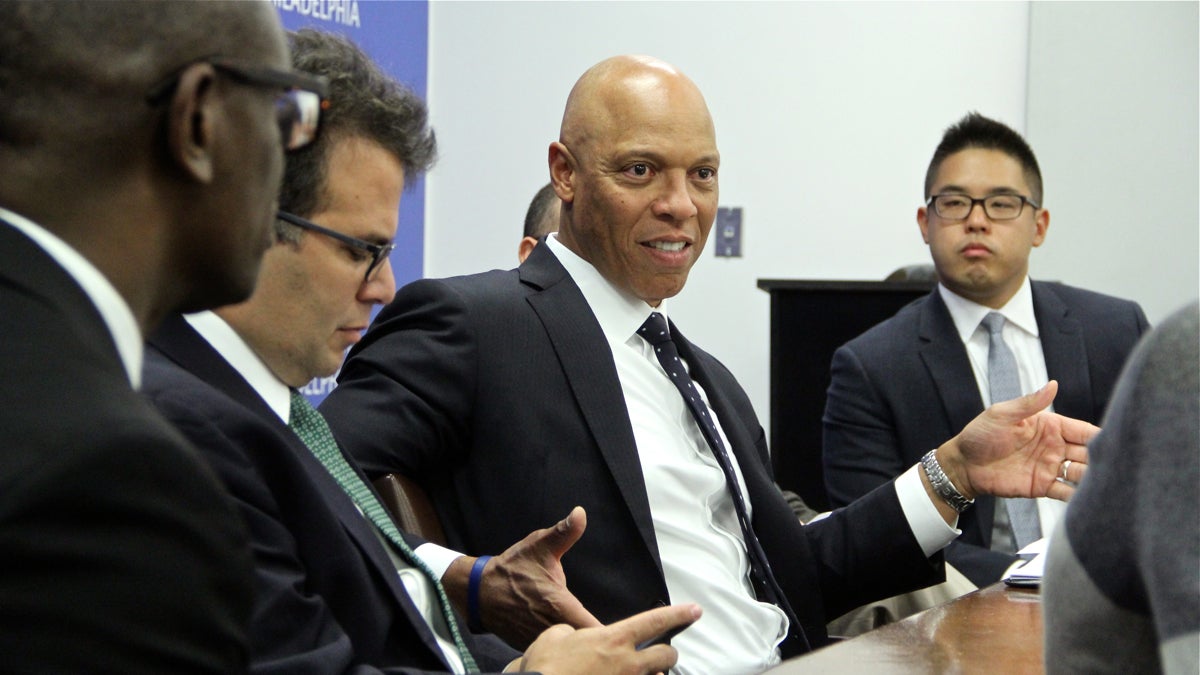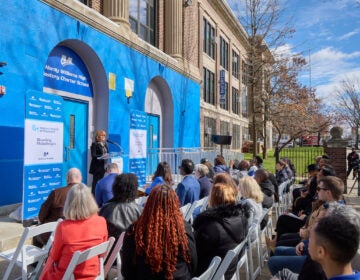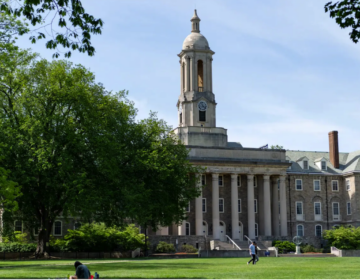Hite says Philly schools need bare minimum of $320 million more next year

Philadelphia Schools Superintendent William Hite. (Emma Lee/WHYY)
The School District of Philadelphia will be asking for $320 million in additional funds next year to reach “a bare minimum amount of improved and sustained educational opportunities for our students and families,” according to a financial supplement to Superintendent Hite’s Action Plan 2.0 made public Thursday.
Ideally, to fully realize Hite’s plan — built on “bold expectations” for creating great schools that can prepare all students for college and careers — the price tag exceeds twice that, Hite said.
“Our citizens deserve better, our students deserve better. We’re asking for a set of investments,” Hite said in a conference call with reporters.
Hite said that the $320 million is on top of $120 million in recurring revenues that is now up in the air due to squabbling between Harrisburg and City Hall over how to raise and distribute it — through extension of a 1 percent sales tax, or a combination of that and a cigarette tax. “We’re assuming that we’re getting the $120 million,” Hite said.
The financial supplement will be formally presented at the School Reform Commission meeting on Thursday.
The document says its purpose is to ask the District’s funders for additional support. It does not directly finger the state or the city as culprits but is blunt in its argument that “money does matter and we do not have enough.” Its conclusion is a call for more resources, highlighting the deprivation caused by years of “disinvestment in the School District of Philadelphia’s students”:
This is a policy with real and damaging consequences for the lives of our students, the future of our city, and the social and economic health of our state. As a District, we are committed to realizing a system of excellent schools capable of providing all our students with the quality education they deserve. Such a system, however, is not possible with the kind of chronic underfunding that is starving our schools and shortchanging our students. … Real improvement requires adequate, fair and stable funding.
This year, due to state and federal cutbacks, the District was forced to slash its workforce and pare down school staffs, including counselors and support personnel, in order to make ends meet. Its pleas for $180 million from the city and state were met primarily by one-time grants totalling about $112 million.
“As a result, we are in the same situation we were in last year,” the document says. “The District cannot afford what works. We can only afford some of what works. This means that we cannot afford to replicate and scale programs that work at the rate our students deserve.”
Besides replacing the non-recurring funds that have helped balance this year’s budget, the District will need about $80 million to cover rising expenses due to pension and charter school costs. The document says about $240 million of the $320 million in new money would be available for additional supports. It would pay for, among other things, beefed-up early literacy, more services for English language learners and special needs students, more expansions and replications of successful schools, better career and technical education, and better teacher development, Hite said.
Hite’s document also reiterated that the District also needs labor concessions in order to save money, to improve schools, and to convince funders that the District deserves the additional investments from them.
Although the District initially sought $133 million in labor savings, mostly through restructuring the compensation system for teachers, nearly a year of negotiations has yielded no agreement. The financial document does not specify a new dollar target for concessions from labor, but it does emphasize that the District needs work rule reforms as well as economic givebacks. It enumerates the major changes the District is seeking from the Philadelphia Federation of Teachers, primarily to give schools more flexibility to choose staff and structure the day more efficiently.
To “assemble school teams that best meet the needs of students and the school community,” the District wants to fill all teacher vacancies through site selection, which it described as “a thoughtful process involving interviews,” rather than through seniority. Now, only some vacancies are filled through site selection. It also wants to let principals decide who to lay off “based on appropriate student-focused criteria” rather than employing a last-hired, first-fired rule (which is, in fact, a state requirement), and not have to recall laid-off employees based on seniority either.
In addition, the District wants to increase instructional time each day, give principals more authority over preparation periods to make it easier for teachers to do collaborative planning, and have more flexibility around rostering “so class schedules can be created in an efficient manner that meets the needs of students.”
Hite said that the ultimate cost to bring the District to a new level is closer to the $770 million in addititional funds each year arrived at by a report prepared for City Council by researchers at the University of Pennsylvania. By way of comparison, it compared Philadelphia per-pupil spending with those of nearby districts. For instance, if the city spent the same per pupil as Lower Merion, it would spend an additional $1.6 billion a year; if it spent at the same level as Pittsburgh’s public schools, it would have an additional $1 billion.
“If in fact we want to get to great schools, our choices are clear,” Hite said. “We either continue down a path of every year struggling to make ends meet, or provide children and educators with the resources they need to do this work.”
—
This story was originaly published by the Philadelphia Public School Notebook, a partner of WHYY/NewsWorks’ coverage of Philadelphia schools.
WHYY is your source for fact-based, in-depth journalism and information. As a nonprofit organization, we rely on financial support from readers like you. Please give today.




